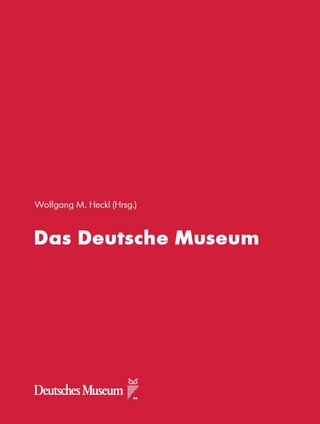
Museum Texts
Comunication Frameworks
Seiten
2005
Routledge (Verlag)
978-0-415-28430-1 (ISBN)
Routledge (Verlag)
978-0-415-28430-1 (ISBN)
Ideal for students and professionals alike, this book uses a wide range of examples, and answers key questions in the study of how museums communicate and provides an excellent set of frameworks to investigate the complexities of communication in museums.
Answering key questions in the study of how museums communicate, Louise Ravelli provides a set of frameworks to investigate the complexities of communication in museums:
* What is an appropriate level of complexity for a written label?
* Why do some choice in language make a more direct relation to visitors?
* Is there a correct way of presenting a particular view of content?
* How do design practices contribute to the overall meanings being made?
The frameworks enhance the way we critically analyze and understand museums text, both in the sense of conventional – written texts in museums – and in an expanded sense of the museum as a whole operating as a communicative text.
Using a wide range of examples Ravelli argues that communication contributes fundamentally to what a museum is, who it relates to and what it stands for.
Not only museum studies and communications studies students, but also professionals in the field will find Museum Texts an indispensable guide on communication frameworks.
Answering key questions in the study of how museums communicate, Louise Ravelli provides a set of frameworks to investigate the complexities of communication in museums:
* What is an appropriate level of complexity for a written label?
* Why do some choice in language make a more direct relation to visitors?
* Is there a correct way of presenting a particular view of content?
* How do design practices contribute to the overall meanings being made?
The frameworks enhance the way we critically analyze and understand museums text, both in the sense of conventional – written texts in museums – and in an expanded sense of the museum as a whole operating as a communicative text.
Using a wide range of examples Ravelli argues that communication contributes fundamentally to what a museum is, who it relates to and what it stands for.
Not only museum studies and communications studies students, but also professionals in the field will find Museum Texts an indispensable guide on communication frameworks.
Louise Ravelli
1. Introduction: Texts, Frameworks and Meanings 2. Organization as a Way of Making Meaning: Using Language to Organize, Shape and Connect 3. Focus: Making Texts Accessible: Adjusting the Level of Complexity 4. Interacting In and Through Language: Using Language to Relate, Engage and Evaluate 5. Representing the World through Language: Using Language to Portray, Interpret and Construct 6. Extending the Frameworks: Understanding Exhibitions and Museums as Texts 7. Conclusion: Integrating the Frameworks
| Erscheint lt. Verlag | 19.12.2005 |
|---|---|
| Reihe/Serie | Museum Meanings |
| Zusatzinfo | 3 Tables, black and white; 17 Line drawings, black and white; 17 Halftones, black and white |
| Verlagsort | London |
| Sprache | englisch |
| Maße | 170 x 245 mm |
| Gewicht | 370 g |
| Themenwelt | Kunst / Musik / Theater |
| Reisen ► Reiseführer | |
| Geisteswissenschaften ► Archäologie | |
| Geisteswissenschaften ► Geschichte ► Hilfswissenschaften | |
| ISBN-10 | 0-415-28430-9 / 0415284309 |
| ISBN-13 | 978-0-415-28430-1 / 9780415284301 |
| Zustand | Neuware |
| Haben Sie eine Frage zum Produkt? |
Mehr entdecken
aus dem Bereich
aus dem Bereich
Anforderungen an das digitalisierte Kulturerbe
Buch | Softcover (2023)
transcript (Verlag)
29,00 €
Buch | Hardcover (2024)
Wallstein Verlag
38,00 €


